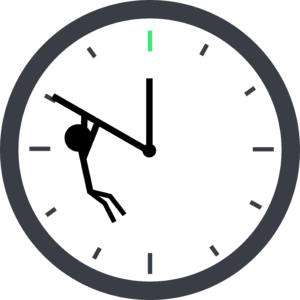
Aerobic Exercise and Longevity | Boosting Heart Health and Lifespan
Aerobic exercise, often referred to as cardio, is a cornerstone of a healthy lifestyle and a key player in promoting longevity. It’s not just about keeping your heart pumping; aerobic exercise enhances energy, supports brain function, and reduces the risk of chronic diseases. For those looking to live a longer, healthier life, incorporating regular aerobic activity into your routine is one of the most impactful changes you can make.
In this guide, we’ll explore how aerobic exercise supports longevity, its unique benefits, and practical tips for getting started.
The Science of Aerobic Exercise and Ageing
Aerobic exercise involves sustained activities that increase your heart rate and breathing, improving your cardiovascular and respiratory systems. Here’s how it supports healthy ageing:
- Enhances Cardiovascular Health
-
- Aerobic activity strengthens the heart, improving its efficiency in pumping blood and reducing the risk of heart disease—the leading cause of death worldwide.
- Supports Metabolic Health
-
- Regular aerobic exercise helps regulate blood sugar levels, improves insulin sensitivity, and supports weight management, reducing the risk of metabolic diseases like Type 2 diabetes.
- Reduces Inflammation
-
- Chronic inflammation contributes to ageing and many age-related diseases. Aerobic exercise lowers inflammatory markers, promoting cellular repair and resilience.
- Boosts Brain Function
-
- Aerobic exercise increases blood flow to the brain, enhancing memory, focus, and cognitive function while reducing the risk of dementia and Alzheimer’s disease.
- Extends Lifespan
-
- Studies consistently show that regular aerobic exercise adds years to life by reducing the risk of chronic diseases and improving overall physical and mental health.
Benefits of Aerobic Exercise for Longevity
Aerobic exercise offers a wide range of benefits that extend far beyond physical fitness:
- Improves Heart and Lung Function
-
- By increasing cardiovascular and respiratory capacity, aerobic exercise helps you stay active and energetic as you age.
- Enhances Mental Wellbeing
-
- Regular aerobic activity releases endorphins, reducing stress, anxiety, and depression while improving overall mood.
- Boosts Energy Levels
-
- Aerobic exercise increases stamina and reduces fatigue, making it easier to stay engaged in daily activities.
- Promotes Healthy Weight Management
-
- By burning calories and improving metabolism, aerobic exercise supports maintaining a healthy weight.
- Strengthens Immunity
-
- Moderate aerobic exercise improves immune function, helping the body fight off infections and illnesses more effectively.
Getting Started with Aerobic Exercise
Incorporating aerobic exercise into your life doesn’t have to be complicated. Here are some practical steps to get started:
- Choose Activities You Enjoy
-
- Popular aerobic exercises include walking, cycling, swimming, dancing, and jogging. Pick activities that align with your interests and fitness level.
- Start Slowly
-
- If you’re new to exercise, begin with 10–15 minutes of light activity, such as brisk walking, and gradually increase the duration and intensity.
- Aim for Consistency
-
- The World Health Organization recommends at least 150 minutes of moderate aerobic exercise or 75 minutes of vigorous aerobic activity per week. Break this into manageable sessions, such as 30 minutes, five days a week.
- Prioritise Low-Impact Options
-
- For older adults or those with joint concerns, low-impact exercises like swimming, cycling, or elliptical training provide an excellent workout without strain.
- Monitor Your Progress
-
- Use a fitness tracker or app to monitor your heart rate, steps, or workout duration, keeping track of your improvements over time.
- Stay Safe
-
- Warm up before exercising, stay hydrated, and listen to your body. If you experience discomfort or shortness of breath, stop and consult a healthcare professional.
Debunking Myths About Aerobic Exercise
Despite its benefits, misconceptions about aerobic exercise persist. Let’s clear up a few:
- Myth: Aerobic Exercise Is Too Intense for Older Adults
Low-impact options and moderate intensity exercises are suitable and highly effective for older individuals. - Myth: It’s Only for Weight Loss
While cardio aids in weight management, its primary benefits lie in enhancing heart health, brain function, and overall vitality. - Myth: You Need Expensive Equipment or Classes
Activities like walking or dancing at home are free and just as effective as gym-based workouts.
Practical Tips for Staying Motivated
- Set Realistic Goals: Focus on small, achievable milestones to build confidence and momentum.
- Find a Workout Buddy: Exercising with a friend or family member can make activities more enjoyable and help you stay accountable.
- Mix It Up: Rotate between different activities to prevent boredom and engage different muscle groups.
Your Path to Longevity Starts Here
Aerobic exercise is one of the most effective ways to promote healthy ageing and extend your lifespan. By improving cardiovascular health, boosting energy levels, and reducing the risk of chronic diseases, regular aerobic activity lays a strong foundation for vitality and longevity.
At Slowing the Clock, we’re here to provide evidence-based guidance to help you live a longer, healthier life. Explore our website for more tips on fitness, recovery, and building a personalised exercise plan tailored to your needs.